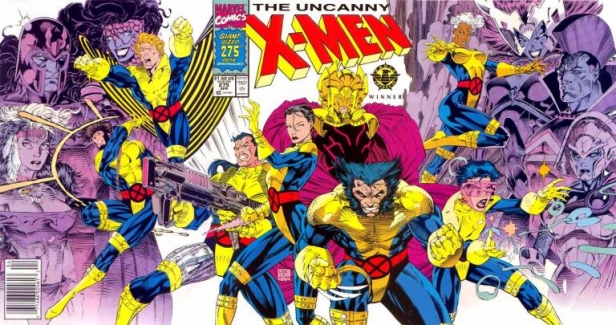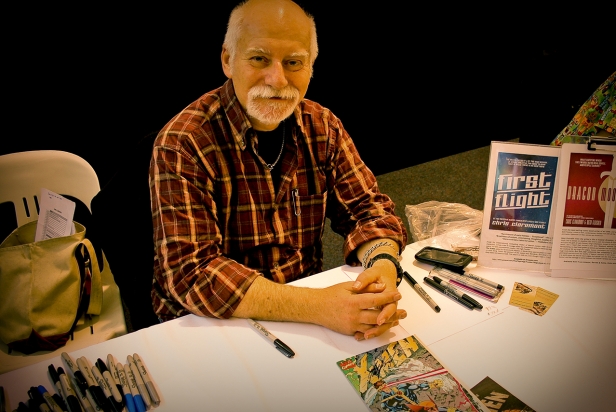
When Chris Claremont was bought onto Uncanny X-Men in 1975 Jean Grey, or Miss Marvel as she was then known, was little more than the eye candy to be lusted after by, well, everyone. We spoke to Claremont about bringing her powers to the forefront and why writing powerful women isn’t as absurd a notion as it seems to sound…
When you started on Uncanny, did you know that you were going to turn Jean Grey into an icon?
I think me and [Uncanny artist] Dave Cockrum had a hope when we set things in motion, I don’t think either of us or John Bryne when he took over the responsibilities as penciler, had any idea where it would ultimately lead. But the initial impulse was to find a way to take the sole distaff member of the team and redefine her to what we hoped was a full potential of her abilities, or a full expression of her potential abilities and see what happened next. And I think Dave came up with a visual icon in terms of the costume and the sense of the Phoenix that was totally right for her and the rest sort of fell into place sort of naturally. So we set the balling rolling, as it were, and didn’t quite realise until it caught up to us and ran us over that we’d actually, to use the mighty cliché, hit the motherlode.
You went on to make Storm the leader of the team, in a time when when a team being more than a ratio of one woman to five or more men was almost unheard of, what drove that decision?
It didn’t seem having a women in a position of power didn’t seem as implausible to me as it did perhaps to others, but that perhaps grew out of the fact that I know too many dynamic, alpha character women in my own life. I expect one could also say, you could look at Eleanor of Aquitaine, you could look at the two Elizabeths. England hasn’t been too shy in that regard either, as having not simply a strong figurehead leader, but a strong, active, aggressive monarch. You know, give it a shot, see what happens, and it worked.
And I think the other side of the coin, aside from the fact that Ororo, the tradition that Ororo comes out of the Central African monarchy community, she was just such a cool character in another self. I mean, part of the reason for her taking centre stage as official leader of the team was she did it at the time when she had no superpowers, and for my perspective that was a little bit to demonstrate, not only was she cool, she really was the best at what she did, not to show that she was better than men, but she was the best person for the job. That she could do it without controlling the weather, as effectively, more effectively than Cyclops did as a newly minted father. None of us were to realise that that was about to run into an iceburg but there we are.

You were writing strong, leading, female characters in a believable way in a time when writers, especially in comics, seemed to find it difficult. Was it hard to make them believable?
Well no, I just swiped from, you know, one of my best friends is a Pulitzer Prize winning, Humboldt prize winner you know name it, she’s got it. She’s got three presidents on speed dial. And what she does for a living is she hunts Ebola, you know, she has her own mop suit, she head up into the reaches of central Africa and find out what makes the bug tick, and she things I’m cool because I write comic books? That’s absurd.
Another one of my best friends, I woke up one morning to hear her on the radio with her partner in Sarajevo and she’s shouting at him to duck because their being fired at my snipers and you can hear the bullets go by. It’s like, when you know people that do that for a living, the natural writer instinct is to swipe as many of those elements as possible and put them in the book and why not let the dust fall where it lay. It got to the point where I defined my one cliché, ‘Oh, it’s a Claremont woman!’ well, tough luck!
There is a story, one of the nice things back in the day when I had a plane, you would land in light airports in the middle of nowhere as opposed to Heathrow and my girlfriend was in the ladies room and a couple of Black Hawks dropped in with a full load of army rangers that had been out on exercises, suddenly, the door booms open to the ladies room and the next thing that is heard is a ton of gear hitting the floor, thump, thump, thump, thump, as this person stripped down. And my girlfriend looks out and there is this young lady using the facility, and she has to pick up her gear, put it on and it turns out she is a Captain in the army, walks out and this whole room of six foot rangers just snaps to attention and salutes. This was her – she may not have been a ranger at the time but she was in command and it’s like ‘Okay, if that’s the real world equivalent let’s play with that and see where it leads’ the rule of thumb, with comics as with any film and dramatic story telling, steal the most interesting elements possible from real life and mix them into the fantasy and cut them loose and see where it leads. And nine times out of ten you will come up with an enticing character, an engrossing story, a scene, something that will grab the reader and make them think ‘Whoa, I didn’t see that coming’ something that will make them turn the page and see what happens next. That’s the theory anyway.
To hear more from Chris Claremont, his take on writing for comic books and his love of Ian McKellen, check out the latest edition of 100 All-Time Greatest Comics, on sale now!
